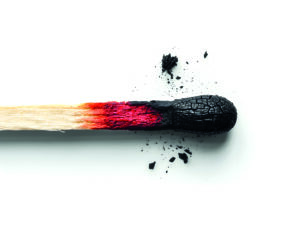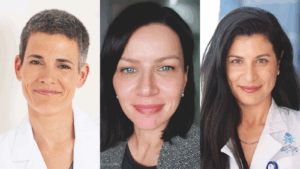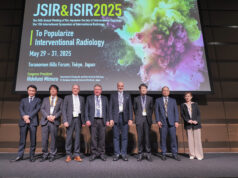 Burnout in interventional radiology (IR) has advanced from anecdotal or subspecialty-specific to a prominent and increasingly researched global concern. Since the publication of Jacob J Bundy (University of Michigan Health System, Ann Arbor, USA) et al’s 2020 survey, which demonstrated the disproportionate severity of the condition among interventional radiologists, several papers have warned of burnout as not only a quality-of-life issue but a structural threat to the IR workforce capacity and patient care.
Burnout in interventional radiology (IR) has advanced from anecdotal or subspecialty-specific to a prominent and increasingly researched global concern. Since the publication of Jacob J Bundy (University of Michigan Health System, Ann Arbor, USA) et al’s 2020 survey, which demonstrated the disproportionate severity of the condition among interventional radiologists, several papers have warned of burnout as not only a quality-of-life issue but a structural threat to the IR workforce capacity and patient care.
At this year’s Cardiovascular and Interventional Radiological Society of Europe (CIRSE) annual congress (13–17 September, Barcelona, Spain) a new session titled ‘Managing your life as an IR’ is throwing burnout and other factors associated with maintaining a healthy work-life balance as an interventional radiologist into sharp relief.
“Most of the doctors who attend the [CIRSE] congress are diligent clinicians—we all know how to treat patients, but we are not prepared to take care of ourselves,” says interventional radiologist Anna Alguersuari Cabiscol (Juaneda Hospitales, Balearic Islands, Spain) speaking to Interventional News. Set to present during the session, Alguersuari’s goal is to expose the “taboo” she believes burnout is still considered. Sharing a personal account, Alguersuari describes that four years ago she experienced “complete burnout” and subsequently quit her job as an interventional radiologist.

“I didn’t care. I didn’t care if I was treating a patient with cancer. I only wanted to finish my work without being questioned by anyone.” She also refers to sometimes feeling disregarded by superiors who, in hindsight she believes, were likely unhappy with her performance. “I was so detached from my colleagues’ needs regarding their patients that I wouldn’t try to collaborate. I was known as Dr No,” Alguersuari retells. During this time, she cites total disconnection from peers and colleagues, while losing all motivation for interventions she once found exciting. In retrospect, she thinks a long-lasting feeling of chronic demotivation and lack of purpose favoured behaviours that were not always civil or respectful. Respect, she explains, encourages a team to “collaborate more productively; if we can’t trust our colleagues enough to ask a question and we don’t treat each other with respect, it’s a complete failure and you will never treat the patient as well as you should”.
Burnout can affect physicians to varying degrees across specialties, causing mental fatigue and even physical illness. In the aforementioned Bundy et al survey, data distinguished specialties in which level of burnout is more severe. The survey was shared via the Society of Interventional Radiology (SIR) Connect Open Forum website, which on the day of posting (7 January 2019) had 7,402 members. From the total membership, there were 339 complete responses. The prevalence of burnout was 71.9% (244 respondents).
“I didn’t care if I was treating a patient with cancer. I only wanted to finish my work without being questioned” – Anna Alguersuari Cabiscol
This abundance of burnout places interventional radiologists in the upper range of that reported amongst all medical specialties. The prevalence of this condition in medicine as described in the literature varies from 30–75%. In fact, the authors of the survey write: “Interventional radiologists report manifestations of burnout at a rate higher than not only the general public (28%) but also diagnostic radiologists (54–61%) and surgeons (40%).”
Statistics on burnout in IR are increasing, however on review of data available today Alguersuari believes the prevalence of the phenomenon is still underestimated, making it impossible to “give a clear idea of how big the problem is”. In her view, and particularly in Spain where she practises, clinicians are reluctant to divulge their struggles to peers or senior staff members for fear of being seen “as a loser—as a failure, yet it affects so many people who are afraid to share it”, she says.
“Confidence and competence”
IR demands that practitioners hone technical skills, aptitude for time-management and the ability to make good decisions in high-pressure situations. Coupled with irregular hours and on-call duties, managing work-life balance can be challenging, arguably none more so than for those in training, Ana Marija Alduk (University Hospital Centre Zagreb, Zagreb, Croatia) believes.
During the CIRSE session, Alduk is set to speak on the needs of young interventional radiologists. She shares that, although she is no longer a junior, she did experience the line blurring between personal and work life when she was training. To her, the “transition to working independently can be extremely stressful, as you are required to perform high-stakes procedures where patient outcomes can be life-changing”.
“Performing procedures without direct supervision and making clinical decisions alone requires a high level of responsibility, confidence and competence, all while young interventional radiologists are still establishing their professional identities and are working longer hours to prove themselves, which can be difficult to manage,” Alduk shares.
Echoed by Alguersuari, finding harmony between confidence and competence can be difficult for interventional radiologists of any age, but she believes women more frequently experience an imbalance—or impostor syndrome. Key characteristics of impostor syndrome are self-doubt, fear of failure and attributing success to external factors—a mindset that Alguersuari has dealt with “all her life”, she says.
“Unfortunately, this is more prevalent in women— it’s how we have been raised,” avers Alguersuari, explaining that, generally speaking, women in IR’s distorted view of their professional contribution may be why they feel the need to overwork.
“It’s a careful balance between confidence and competence. In IR, our competence is very high— we wouldn’t be where we are if it wasn’t. But my confidence, for example, is usually very low, because we don’t train for confidence, only competence,” Alguersuari describes. “They make sure we know how to treat the patient, but not how to look after ourselves with all the pressure we experience. When confidence is too low, burnout appears, as you feel insecure about your abilities,” she says.
“I’m still angry to this day”
Although the session set to take place on Saturday at CIRSE 2025 is directed toward all interventional radiologists, challenges vary across genders when considering family responsibilities. Research conducted by Najafi et al in 2024 found that women bear a disproportionate share of caregiving duties. When paired with an unpredictable work schedule, this can be a significant threat to a sustainable work-life balance.
To Michal Mauda-Havakuk (Tel-aviv Sourasky Medical Center, Tel-aviv, Israel)—also due to speak during the upcoming session—all interventional radiologists struggle to maintain work-life balance in relation to family responsibilities, not just women. In her view, this is most acutely felt during new parenthood. Mauda-Havakuk highlights that men in heterosexual relationships today “want to exercise parenthood” just as much as women, placing importance on equal maternity/paternity leave.
Mauda-Havakuk does however emphasise the importance of providing support for interventionalists who are pregnant or breastfeeding—support which was not provided to her as a resident diagnostic radiologist. “As there is no direct IR residency in Israel, I was a diagnostic radiology resident, and my team—even the women on my team—did not support me. I was not entitled to designated time for breastfeeding for example, something that is mandated by law nowadays. The attitude was ‘if it’s been tough for me, it will be tough for you’ and I’m still angry to this day,” Mauda-Havakuk retells. “In my department at the time, a male colleague had broken his little finger and had been given sick leave for six months. That was longer than my maternity leave,” she shares.
Pregnancy is a small portion of a woman’s career, Mauda-Havakuk states, highlighting that “we’re talking about two to three years within a 30-year career” in which women should be provided additional support. She states that institutions and individuals must do more to raise awareness, but that “more men must talk about these issues”. “It’s empowering to talk about amongst women, but if we want a true push, we need male voices to join us,” she says. To this call Alguersuari abides, stating that “if nothing is done and societies neglect to talk about this, there will be fewer interventional radiologists, and this will become a chronic problem”.
“The culture is shifting”
In her return to IR, Alguersuari credits a shift in focus as the key to her renewed enthusiasm to practise IR. “I decided that patients were the focus and nothing else mattered—not my ego, nor my need to show that I knew things,” Alguersuari shares. In retiring the concept that independence and self-sufficiency equate to an effective interventionist, Alguersuari sought to collaborate more with her team, while showing “vulnerability, even to the patient”.
Alduk agrees that creating a “supportive environment that encourages asking questions and learning, not only from successes, but from failure, is crucial for building confidence”, which can be easily achieved through mentorship, she says. To Alguersuari, this is the “only solution” to the issue, and that “mentorship is vital to teach trainees how to look after themselves”.
“We have a very stressful specialty. This is a fact we cannot escape,” says Alguersuari. “If you see stress as a bad thing, it could kill you. However, if you see stress as a challenge, as something that makes you find better resources to solve the problem, this will transform your mental strength,” she advises.
Alduk states that setting clear boundaries and delegating tasks can help in reducing stress, a skill that she feels the younger generation are better at doing. In her experience, the older generation often “accepted longer hours and personal sacrifice”.
“But the culture is shifting,” Alduk details, “there is more emphasis on balance and wellbeing now.” She sees the increased awareness of stress among younger interventionists to be “positive”, however does believe that this may make them more “susceptible” to stress as they “place greater emphasis on achieving work-life balance and so may feel the effects of stress more acutely when this balance is disrupted”.
Above all, the speakers emphasise the benefit of mentorship programmes that can support residents and trainees, to increase job satisfaction and reduce rates of burnout. Although there are few well-established mentorship schemes in place globally and data are “lacking” on how best to implement them, Alguersuari believes this is a goal to work toward collaboratively.
“What everyone must take away is that we are all at risk. I love my job. I really love my job, but I thought that I had chosen the wrong one. I believed that I had studied enough, and I did everything I was supposed to do, and I still experienced this,” Alguersuari concludes.










